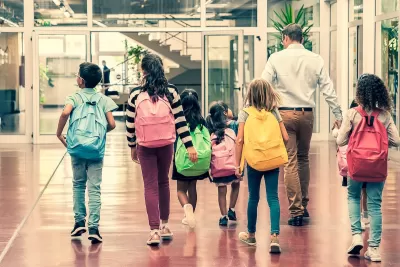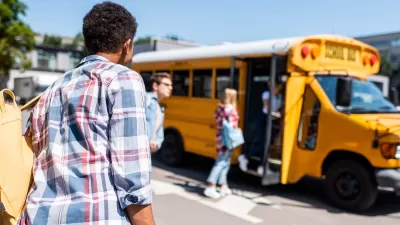Discover how schools play a crucial role in community development by fostering inclusivity, enhancing local engagement, and serving as hubs for social and cultural activities.

Urban planners design blueprints and cause structures to break ground, but there is more beyond the technical infrastructure. They are in charge of bringing communities together through quality school buildings.
Schools are more than places to learn — they are pillars of culture and social development. These structures are more vital than ever for crafting accepting neighborhoods that promote equity and engagement.
How educational institutions are societal centers
Schools create a community’s social, cultural, and economic footprint, especially in cities. How do they do this?
Social cohesion and community building
There is a reason schools are known as anchor institutions — they are the most reliable places to make stable relationships with people nearby. They are also places to host events and lectures, bringing people of all ages and backgrounds together to interact with the learning generation.
Cultural vibrancy
Educational institutions are prime places to incorporate diversity, equity and inclusion programming. Regardless of the region’s demographics, urban planners can still facilitate culturally aware landscapes that inspire creativity, empathy and collaboration by representing varied backgrounds in designs and partnerships.
Economic development
Inspiring youth at school with knowledge and passion is the key to keeping them in the local workforce. Urban planners can be the catalysts in connecting the job market with curriculum developers to forge specialists from a young age. This could make regions hubs of research and innovation.
Urban renewal
Underutilized urban spaces falling into disarray can become educational centers, whether formal public education or volunteer-led clubs and organizations. Urban planners could take old buildings in disrepair and give them new life, giving communities more curb appeal and modern infrastructure. These revitalization projects could also better integrate with amenities like public transportation, which planners must consider when designing building orientations and access points.
Sustainability
Urban planners incorporate green ideals into schools by making them support renewable energy and eco-friendly building materials. However, they must also consider the long term. Educational facilities should have well-nourished soil to support community gardens and urban agriculture, shifting the mindsets of city populations. Simply being a building built on climate-friendly principles could also encourage early environmental stewardship.
How urban planners integrate schools into communities
Not every vacant plot of land is suitable for an urban school. The best integrations strategize how well neighborhoods can commute or walk to them. It also requires technological infrastructure to make digital resources available to everyone with minimal resistance.
Here are other qualities planners prioritize when making a school a place of mutual respect and collaboration in equitable communities:
- Access to public transportation
- Multipurpose facilities and third spaces
- Open play areas
- Partnerships with local nonprofits and businesses
- Community-led participation in event planning
- Neighborhood safety
- Adaptable and flexible learning spaces
- Digital innovation
In 2022, higher education saw a much-needed spike in enrollment rates, but it doesn’t hold a candle to the numbers seen in years like 2019. Schools are a place for students to learn if higher education is for them. They can only make these life-changing decisions if urban planners set facilities up for success by giving students the option.
How can planners succeed to build powerful spaces
The digital divide separates people by more than their technological literacy — it has negative connotations to socioeconomic status or reduced accessibility to modern resources. Urban planners can eliminate this stigma by making schools a level playing field for students of all backgrounds.
In 2019, the San Antonio Independent School District connected 18 schools with nonprofits to bolster a specific aspect of each institution’s mission. Examples include research in early childhood development or boosting tech funding. Community-based learning centers are also rising in cities like Cincinnati, showing how a little coordination goes a long way.
The East Harlem School at Exodus House is another phenomenal example of supplementing urban needs with increased educational opportunities. An estimated 88% of students are from immigrant families. The school and its planning empower the attendees who may have been disadvantaged by systemic injustice, giving hope to these iconic regional communities through interdisciplinary, cooperative learning.
The stories schools tell
Communities are the foundation behind the most legendary schools, urban planners are the task force and educators are the legacy. Planners are responsible for knowing the region’s values while fostering a more modern, inclusive environment for the schools of tomorrow. Urban workers must embrace these ideals to make schools worth teaching the next generation in.

Alabama: Trump Terminates Settlements for Black Communities Harmed By Raw Sewage
Trump deemed the landmark civil rights agreement “illegal DEI and environmental justice policy.”

Study: Maui’s Plan to Convert Vacation Rentals to Long-Term Housing Could Cause Nearly $1 Billion Economic Loss
The plan would reduce visitor accommodation by 25% resulting in 1,900 jobs lost.

Why Should We Subsidize Public Transportation?
Many public transit agencies face financial stress due to rising costs, declining fare revenue, and declining subsidies. Transit advocates must provide a strong business case for increasing public transit funding.

Paris Bike Boom Leads to Steep Drop in Air Pollution
The French city’s air quality has improved dramatically in the past 20 years, coinciding with a growth in cycling.

Why Housing Costs More to Build in California Than in Texas
Hard costs like labor and materials combined with ‘soft’ costs such as permitting make building in the San Francisco Bay Area almost three times as costly as in Texas cities.

San Diego County Sees a Rise in Urban Coyotes
San Diego County experiences a rise in urban coyotes, as sightings become prevalent throughout its urban neighbourhoods and surrounding areas.
Urban Design for Planners 1: Software Tools
This six-course series explores essential urban design concepts using open source software and equips planners with the tools they need to participate fully in the urban design process.
Planning for Universal Design
Learn the tools for implementing Universal Design in planning regulations.
Smith Gee Studio
Alamo Area Metropolitan Planning Organization
City of Santa Clarita
Institute for Housing and Urban Development Studies (IHS)
City of Grandview
Harvard GSD Executive Education
Toledo-Lucas County Plan Commissions
Salt Lake City
NYU Wagner Graduate School of Public Service






























